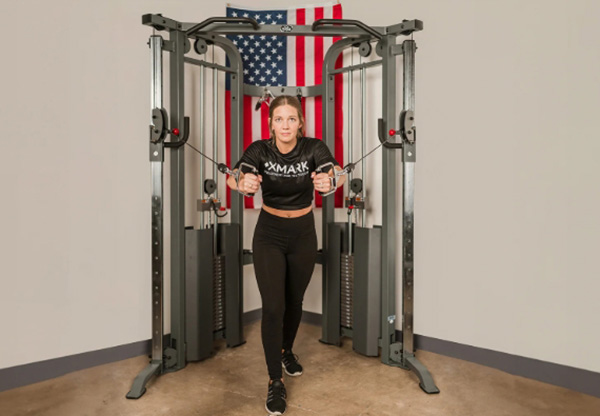A functional trainer is a versatile piece of strength training equipment designed to mimic natural body movements. Unlike traditional machines that isolate specific muscles using fixed paths, a functional trainer allows for a wide range of motion and exercises that replicate real-life activities—making it ideal for improving everyday strength, flexibility, and coordination.
Functional trainers have become increasingly popular in home gyms, commercial fitness centers, and physical therapy clinics due to their adaptability and efficiency. But what exactly makes this machine “functional,” and how can it benefit your workout routine?

Structure and Features
At its core, a functional trainer consists of a dual cable pulley system mounted on a frame. Each cable runs through adjustable pulleys that can be positioned at different heights, allowing for customized exercise angles and resistance paths. The cables are attached to a weight stack or resistance plates, which users pull against during movement.
Common features of a functional trainer include:
-
Adjustable pulley arms
-
Two independent weight stacks
-
Various handles and attachments (e.g., straight bar, rope, D-handles)
-
Chin-up or pull-up bars
-
Compact footprint suitable for home gyms
Some high-end models also include integrated Smith machines, bench attachments, and accessory storage for a complete training solution.
Why Is It Called “Functional”?
The term “functional” in fitness refers to training that helps you perform activities in daily life more easily and safely. Functional trainers are built to support multi-joint, compound movements that simulate real-world motions like lifting, twisting, pushing, and pulling.
For example:
-
A cable woodchop exercise mimics the motion of swinging a bat or lifting groceries from a cart.
-
A single-arm cable press resembles pushing open a heavy door.
-
Squats with rows engage the whole body, similar to lifting a box from the ground.
By targeting multiple muscle groups and encouraging balance and core engagement, functional training improves strength that is directly transferable to everyday tasks.
Benefits of Using a Functional Trainer
-
Versatility
-
One of the main advantages is the ability to perform dozens or even hundreds of exercises on a single machine. From upper body to lower body to core, you can work nearly every muscle group.
-
-
Safe and Beginner-Friendly
-
Because the movement is guided by cables and the resistance is adjustable, functional trainers are safer than free weights, especially for beginners or those recovering from injuries.
-
-
Customizable Resistance and Movement
-
You can train with light resistance for rehab or mobility work, or increase the load for strength development.
-
-
Efficient Full-Body Workouts
-
Combining upper and lower body exercises saves time and boosts heart rate, making it ideal for circuit or HIIT-style training.
-
-
Improves Balance and Stability
-
Since most exercises require you to stabilize your body during movement, functional trainers help develop core strength and balance.
-
Who Should Use a Functional Trainer?
Functional trainers are suitable for:
-
Beginners who want safe and guided strength training
-
Athletes seeking sport-specific conditioning
-
Seniors aiming to maintain mobility and independence
-
Rehabilitation patients under professional guidance
-
Home gym users looking for an all-in-one solution
Conclusion
A functional trainer is more than just another gym machine—it’s a powerful, adaptable tool for building strength that translates into everyday life. Whether you’re lifting groceries, playing sports, or simply trying to move better as you age, a functional trainer helps improve performance, reduce injury risk, and boost overall fitness.
Its combination of safety, versatility, and full-body training potential makes it an excellent investment for both novice exercisers and seasoned athletes alike. If you’re building a home gym or upgrading your current workout routine, a functional trainer might be just what you need.
Post time: 05-15-2025



